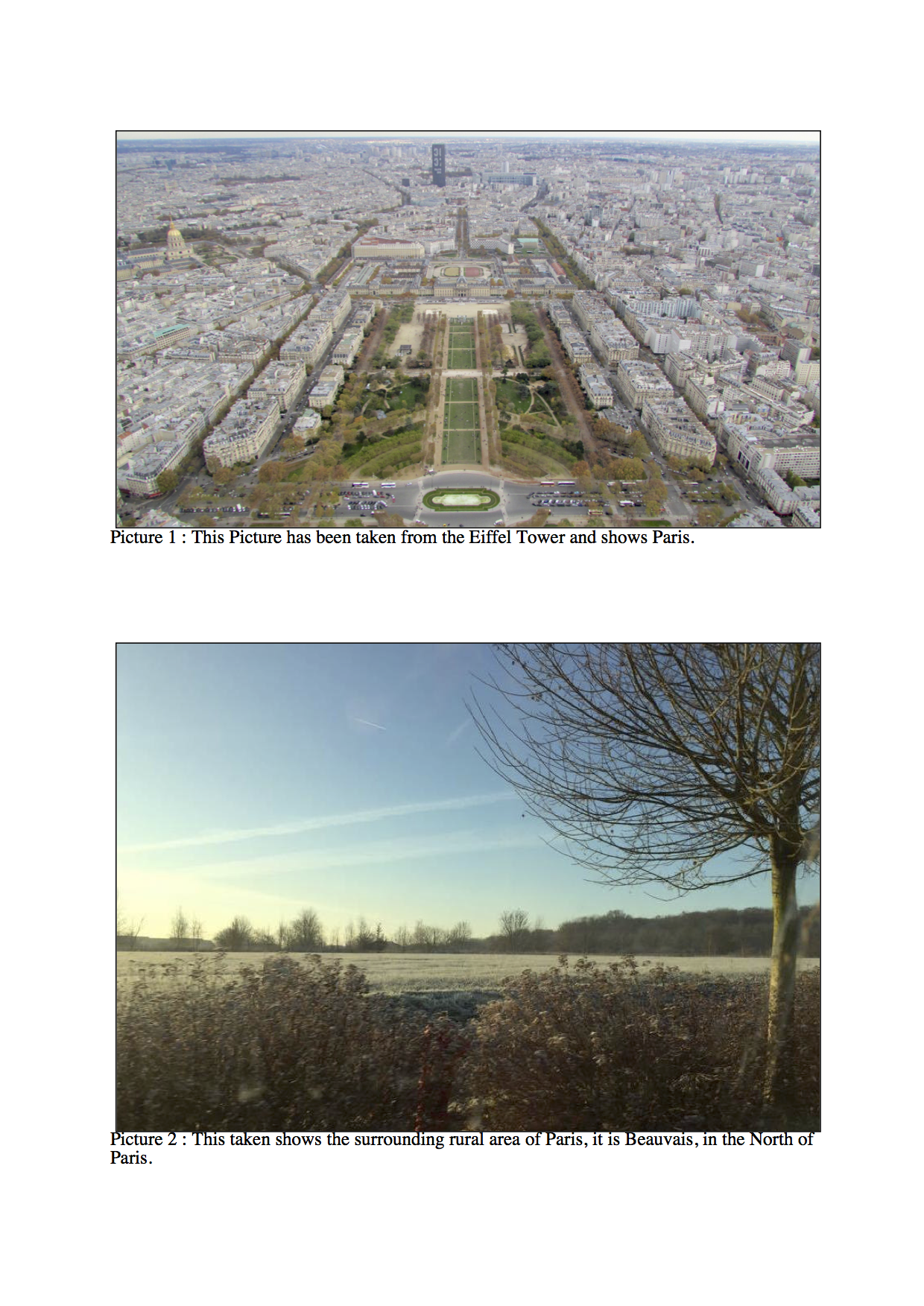
Uploaded on 2017-03-13 by Diane de la Bourdonnaye
1. Check the temperature differences in US cities On average across all 60 cities, urban summer temperatures were 2.4°F hotter than rural temperatures. Urban heat islands are even more intense at night. Over the past 10 years, average summer overnight temperatures were more than 4°F hotter in cities than surrounding rural areas. 2. Which are the main UHI effects that you can identify in your area? The observation of an Urban Heat Island (UHI) is the more concrete demonstration of the climatic effect of the urbanized area of Paris. The city of Paris records a mean thermal positive anomaly of 3°C during the night, which almost totally vanishes during the day. The nocturnal intensity of the UHI varies from day to day, depending on the weather types: the urban-rural thermal difference can vary between 0 and more than 10°C. The picture of Paris (Picture 1) shows the main causes of UHI in Paris : - Transportation: in Paris, cars are highly used even the public transportation are convenient ones. Due to use of cars, the greenhouse gases are released into the atmosphere. - Impervious urban surface: in Paris, roads, pavements are basically impervious surfaces. Asphalts roads have low albedo, so, it absorbs the heat radiation and releases into the atmosphere at night. Even the pavements used are concrete ones in many areas of the Paris. So, these land covers large area which has low albedo and impervious surface, which leads to release of heat and no cooling effect at the night time. - Greeneries: there are lots of parks and green spaces in Paris, but as it would be compared to the infrastructure density, these green spaces are lesser. In some areas it has green surrounding environment in others it is totally deserted. So, the need of vegetations, plants, trees and parks required to be distributed equally in the each corner. - Flow of Wind: the densely populated urban scenario blocks the flow of the wind. The city cuts more wind channelling and the cooling effect of the land decreases. So, this is also one of the facts which help in increase in UHI effect in urban scenario. - Greenhouse gases: The release of green house gases in the atmosphere has also increased the UHI effect in Paris. All of this effects are less or not visible in Beauvais (Picture 2), the surrounding rural area of Paris. In Beauvais, there are less people, less houses and more greeneries. The city is really smaller than Paris and constructions are not as taller as those in Paris. 3. Which are the measures you would propose? If I could take part in the decision-making process of an initiative related to the UHI effect, the measures that I would propose in order to reduce it and provide a more livable environment to the citizens are to plant more trees and to keep the greeneries safe. I think it is also possible to introduce a better traffic regulation or to install a better insulation on the constructions. 4. Is UHI effect concerning policy making in your area? Kind of policies are planned to reduce the UHI effect in Paris, especially in transportation. For example, there is a system of alternating system or a system to reduce the car number in Paris. These are new systems; the results are not yet very conclusive. It is also existing mitigation strategies used in Paris like the use of cooling system, green walls or greeneries in buildings.